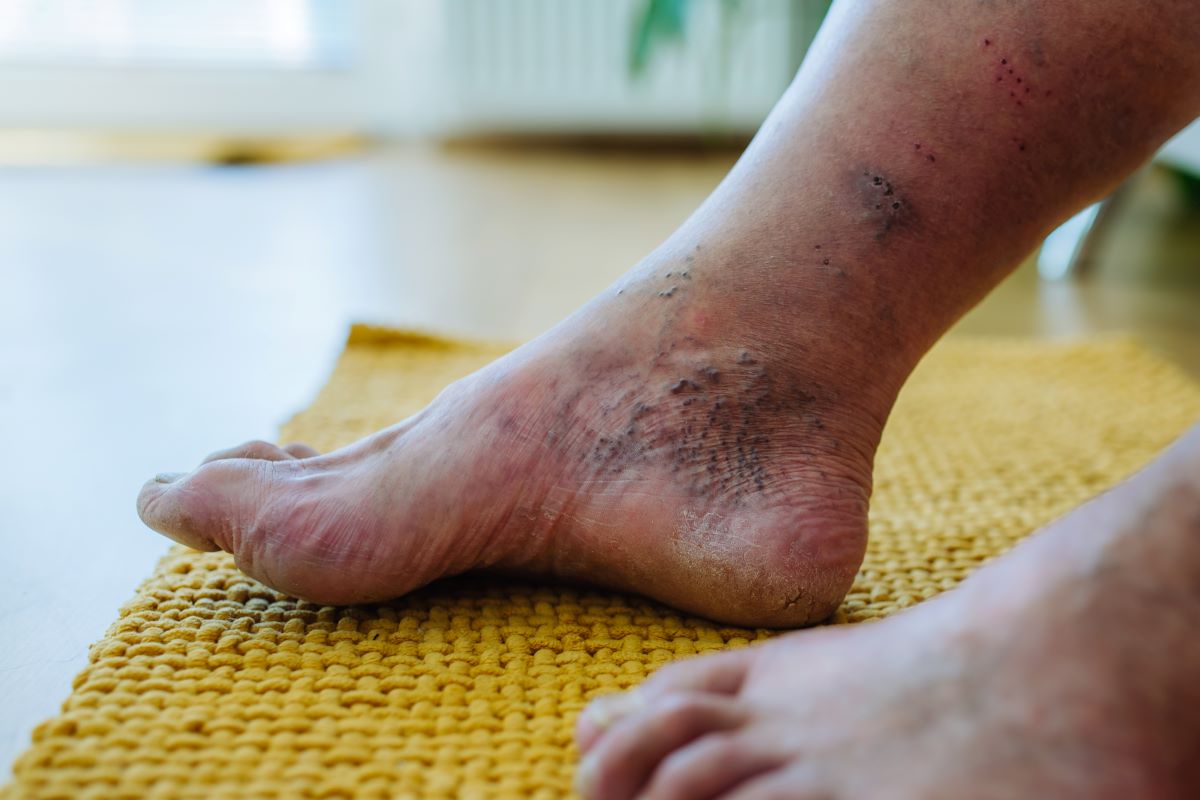Amputation is the surgical removal of a body part, and it affects millions of people worldwide each year. Diabetes is one of the leading causes of amputation, but many patients don't understand the impact and prevention associated with it.
This blog post will discuss the causes of amputation in diabetes patients, risks associated with amputation for diabetes patients, prevention measures to help avoid amputation in diabetes patients, potential effects of amputation on the quality of life for diabetes patients, and a summary. By understanding these topics better, we can empower diabetes patients everywhere to reduce their risk and improve their lives.
Introduction
Diabetes is a chronic health condition that can lead to devastating complications, including amputation. Amputations can profoundly impact an individual’s quality of life, and it is essential to understand the risk factors, prevention, and management strategies associated with diabetes-related amputations.
In this blog post, we will provide an overview of diabetes-related amputations and discuss steps individuals can take to reduce their risk and manage their diabetes care. We will also explore how healthcare professionals are working hard to prevent future cases of amputation.
Causes Of Amputation In Diabetes Patients
Amputation is a frightening and life-altering consequence of diabetes. When an individual has diabetes, their blood sugar levels can stay abnormally high due to not managing the disease correctly. This can cause damage to the cardiovascular system, leading to poor circulation in the limbs and restricted oxygen flow.
With limited access to nutrients and oxygen, these areas become prone to infections, which can ultimately result in gangrene and amputation of the affected limb. Additionally, nerve damage from unmanaged diabetes can lead to neuropathy in the feet or hands, leaving them susceptible to injury if not protected.
Prevention of amputation involves good footcare and regular self-monitoring of blood glucose levels. It is also important for individuals with diabetes to see their doctor regularly and attend frequent screenings for any early signs that could indicate complications such as numbness or discoloration in their extremities.
Risks Associated With Amputation For Diabetes Patients
Amputation is a drastic measure that can have serious long-term effects on diabetes patients. While amputation may be necessary to remove severely damaged tissue, there are still significant risks associated with the procedure. These include excessive bleeding, infection, and impaired healing due to insufficient blood flow in the affected area.
Additionally, joint instability caused by amputation can lead to chronic pain and immobility. Finally, psychological distress caused by limb loss could manifest as depression or other mental health issues, further complicating a patient’s recovery. It is important for medical professionals to recognize these risks before recommending an amputation as well as offering appropriate treatment options if applicable.
Prevention Of Amputation In Diabetes Patients
Living with diabetes means learning to manage the condition every day to prevent long-term complications. One of these risk factors is the potential for amputation due to inadequate care and blood sugar control. Amputations can be physically and emotionally traumatic events, so it’s important for diabetes patients to know how they can prevent this from occurring. Practicing regular foot care is essential since diabetes can impair sensation in the feet, leading to sores that may not heal quickly or properly if left untreated.
Furthermore, controlling blood glucose levels through medication, healthy eating habits, and exercise is key to avoiding tissue damage that might lead to an amputation down the road. Finally, those with diabetes should always talk with their doctor about any changes they're experiencing in their extremities so proper treatment can be obtained as soon as possible. With education and proactive preventative steps, individuals living with diabetes can take charge of their health and reduce their chances of having an amputation due to this chronic condition.
Effects Of Amputation On Quality Of Life For Diabetes Patients
Amputation of a limb is one of the most serious consequences associated with diabetes, often leading to significant decreases in the quality of life for affected individuals. Amputations leave clients with severe physical and psychological disabilities that can lead to depression, social isolation, and impairment in self-care or activities of daily living.
In addition, they may experience phantom limb pain and difficulty adjusting to prosthetic devices or artificial limbs. The emotional trauma associated with these losses can be overwhelming for those affected by amputation due to their diabetes. Providing adequate psychological support is essential for improving the quality of life for diabetes patients who have undergone amputation.
Summary
This blog post focuses on understanding the impact and prevention of amputation in diabetes patients. It explains in detail the risks associated with diabetes that can lead to amputation as well as preventative steps to reduce the potential risk. These steps include regular foot care, regular monitoring of blood glucose levels, eating a healthy diet, and participating in physical activity.
The article also provides information about available resources for treatment and support for amputees. In conclusion, this post is an essential source of knowledge for anyone wanting to gain insight into the implications of diabetes-related amputations and how they can be prevented or managed when they occur.


